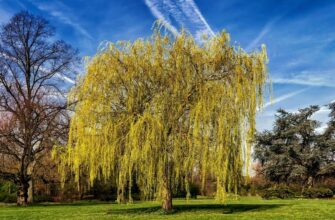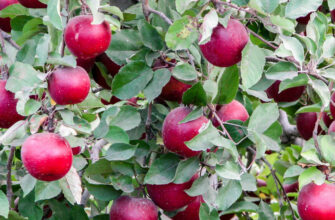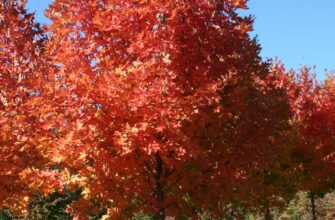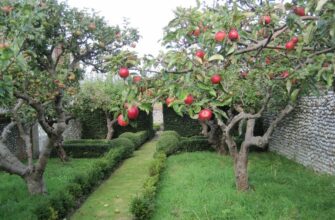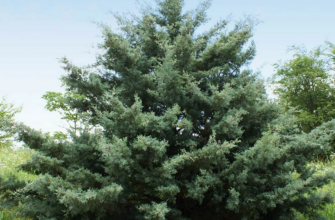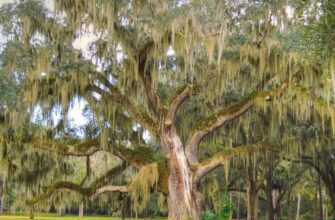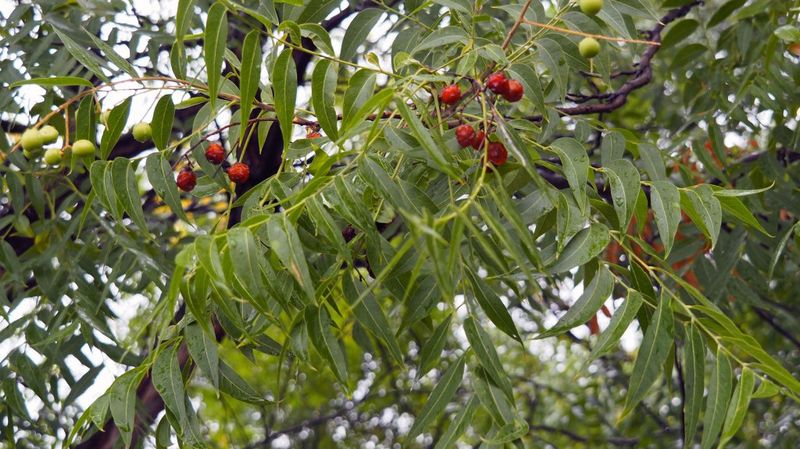
- Is the western soapberry the tree for you?
- What is the Western Soapberry Tree?
- Native Habitat of the Western Soapberry Tree
- Physical Characteristics of the Western Soapberry Tree
- Historical Uses of the Western Soapberry Tree
- Medicinal Properties of the Western Soapberry Tree
- Cultivation and Propagation of the Western Soapberry Tree
- Environmental Benefits of the Western Soapberry Tree
- Economic Benefits of the Western Soapberry Tree
- Ecological Role of the Western Soapberry Tree
- Wildlife and the Western Soapberry Tree
- Landscaping with the Western Soapberry Tree
- Challenges and Considerations for Growing the Western Soapberry Tree
- Harvesting and Using Soapberries from the Western Soapberry Tree
- Recipes and Uses for Soapberries from the Western Soapberry Tree
- Conservation Efforts for the Western Soapberry Tree
Is the western soapberry the tree for you?
The Western Soapberry Tree, also known as the Soapberry Tree or Sapindus saponaria, is a unique plant native to the western United States. This tree is highly valued for its numerous benefits and has been used for centuries by various indigenous communities. If you are looking for a natural and sustainable solution, the Western Soapberry Tree is the perfect choice.
One of the main advantages of the Western Soapberry Tree is its ability to produce soapberries. These small, round fruits contain a natural soap-like substance called saponin. Saponin has excellent cleaning properties and can be used as a gentle yet effective alternative to chemical-based detergents. Whether you want to wash your clothes, clean your dishes, or even take a refreshing shower, soapberries from the Western Soapberry Tree can do it all.
Another benefit of the Western Soapberry Tree is its environmental friendliness. By using soapberries instead of conventional detergents, you can significantly reduce your carbon footprint. Soapberries are biodegradable, non-toxic, and free from harmful chemicals, making them safe for both you and the environment. Additionally, the Western Soapberry Tree is a low-maintenance plant that requires minimal water and care, making it an ideal choice for sustainable gardening.
Furthermore, the Western Soapberry Tree offers a range of health benefits. Saponin, the natural soap-like substance found in soapberries, has been known for its anti-inflammatory and antimicrobial properties. It can help soothe skin irritations, reduce inflammation, and even fight against certain bacteria and fungi. Whether you have sensitive skin or simply want to enhance your overall well-being, incorporating soapberries from the Western Soapberry Tree into your daily routine can be highly beneficial.
Overall, the Western Soapberry Tree is a versatile and eco-friendly plant that offers numerous benefits. Whether you are looking for a natural cleaning solution, a sustainable gardening option, or a way to improve your health, the Western Soapberry Tree has got you covered. So why not embrace the power of nature and discover the wonders of the Western Soapberry Tree for yourself?
What is the Western Soapberry Tree?
The Western Soapberry Tree, scientifically known as Sapindus saponaria, is a deciduous tree native to the southwestern United States and Mexico. It is a medium-sized tree that can reach heights of up to 30 feet. The tree is characterized by its glossy green leaves and clusters of small white flowers that bloom in the summer.
One of the most distinctive features of the Western Soapberry Tree is its fruit, which are small berries that turn from green to yellow as they ripen. These berries are rich in saponins, which are natural soap-like substances. They have been used for centuries by Native Americans and early settlers as a natural soap and shampoo.
The Western Soapberry Tree is not only valued for its soap-making properties, but it also has several other benefits. For example, it is a nitrogen-fixing tree, which means it can improve soil fertility by converting atmospheric nitrogen into a form that plants can use. This makes it a valuable tree for reforestation and soil restoration projects.
Additionally, the Western Soapberry Tree provides habitat and food for various wildlife species. Its berries are a source of food for birds and small mammals, while its dense foliage provides shelter and nesting sites. It is also a popular tree for landscaping and can be planted in gardens and parks to provide shade and beauty.
In conclusion, the Western Soapberry Tree is a versatile and beneficial tree that offers not only natural soap-making properties but also environmental and wildlife benefits. Whether you are looking for a sustainable soap alternative or a tree to enhance your landscape, the Western Soapberry Tree is a great choice.
Native Habitat of the Western Soapberry Tree
The Western Soapberry Tree (Sapindus saponaria var. drummondii) is native to the southwestern United States, particularly Texas, Oklahoma, and New Mexico. It is a small to medium-sized deciduous tree that thrives in a variety of habitats, including prairies, woodlands, and riverbanks.
The Western Soapberry Tree is well-adapted to the arid conditions of its native habitat. Its deep roots allow it to access water sources even during droughts, making it a resilient and hardy tree. It is also tolerant of a wide range of soil types, from sandy to clayey, further contributing to its ability to thrive in diverse environments.
One of the key features of the Western Soapberry Tree is its ability to produce soapberries, which are small, round fruits that contain high levels of saponins. These saponins can be used to create a natural soap when the berries are crushed and mixed with water. The soapberries have been used by Native American tribes for centuries as a cleaning agent for clothes, hair, and even as a natural insect repellent.
The Western Soapberry Tree is a valuable resource for both humans and wildlife. Its dense foliage provides shade and shelter for birds and other animals, while its flowers attract pollinators such as bees and butterflies. The soapberries also serve as a food source for birds and small mammals, making the tree an important part of the local ecosystem.
If you are looking for a versatile and environmentally-friendly tree for your landscape, the Western Soapberry Tree is an excellent choice. Its adaptability, soapberry production, and ecological benefits make it a valuable addition to any garden or natural area.
Physical Characteristics of the Western Soapberry Tree
The western soapberry tree, also known as Sapindus saponaria var. drummondii, is a deciduous tree native to the southern United States. It is a medium-sized tree that can reach heights of up to 50 feet. The tree has a rounded crown and a straight trunk with smooth, grayish-brown bark. Its branches are slender and spread out in a wide, open pattern.
The leaves of the western soapberry tree are compound and composed of several leaflets. Each leaflet is elliptical in shape and has a glossy, dark green color. The leaflets are arranged opposite each other along the stem, giving the leaves a pinnate appearance. In the fall, the leaves turn a vibrant yellow color before dropping off the tree.
One of the most distinctive features of the western soapberry tree is its fruit. The tree produces small, round berries that are about the size of a marble. These berries are initially green but turn a pale yellow or tan color as they mature. The berries contain a soap-like substance called saponin, which gives them their name. When the berries are crushed or mixed with water, they produce a lather that can be used as a natural soap or detergent.
The western soapberry tree is a versatile and hardy tree that can adapt to a variety of soil types and climates. It is drought-tolerant and can withstand hot and dry conditions. The tree is also resistant to many pests and diseases, making it a low-maintenance option for landscaping. Whether you are looking for a shade tree, a natural soap source, or simply an attractive addition to your garden, the western soapberry tree is an excellent choice.
Historical Uses of the Western Soapberry Tree
The western soapberry tree, also known as Sapindus saponaria var. drummondii, is a versatile plant that has been used for various purposes throughout history. Native to the southwestern United States and northern Mexico, this tree has played a significant role in the lives of indigenous peoples for centuries.
One of the primary historical uses of the western soapberry tree is for its soap-like properties. The berries of the tree contain a high concentration of saponins, which are natural surfactants that can create a lather when mixed with water. Indigenous peoples would crush the berries and use them to wash their clothes, hair, and even their bodies. The soapberry’s natural cleansing abilities made it a valuable resource in regions where traditional soap was not readily available.
In addition to its cleansing properties, the western soapberry tree also had medicinal uses. The saponins found in the berries were believed to have anti-inflammatory and antimicrobial properties. Indigenous peoples would use the berries and their extracts to treat various skin conditions, such as rashes, insect bites, and even minor wounds. The soapberry was also used as a natural remedy for digestive issues, as it was believed to have a soothing effect on the stomach.
Furthermore, the western soapberry tree played a role in traditional ceremonies and rituals. The berries were often used as offerings or as part of spiritual cleansing rituals. The tree itself was considered sacred by some indigenous tribes, and its presence was believed to bring good luck and protection.
Overall, the historical uses of the western soapberry tree highlight its importance in the daily lives of indigenous peoples. From its soap-like properties to its medicinal and spiritual uses, this tree has been a valuable resource throughout history.
Medicinal Properties of the Western Soapberry Tree
The Western Soapberry tree, also known as Sapindus drummondii, is a versatile plant that offers a wide range of medicinal properties. This tree is native to North America and has been used for centuries by indigenous peoples for its healing abilities.
One of the main medicinal properties of the Western Soapberry tree is its anti-inflammatory effects. The soapberry contains compounds that can help reduce inflammation in the body, making it a useful remedy for conditions such as arthritis and joint pain. By consuming the soapberry or using it topically, you can experience relief from inflammation and associated discomfort.
In addition to its anti-inflammatory properties, the Western Soapberry tree is also known for its antimicrobial and antifungal effects. The soapberry contains natural compounds that can help fight against harmful bacteria and fungi, making it a valuable ingredient in natural remedies for skin infections, such as acne or fungal infections like athlete’s foot.
Furthermore, the soapberry can be beneficial for digestive health. It has been traditionally used to relieve digestive issues, such as diarrhea and indigestion. The soapberry contains saponins, which have a mild laxative effect and can help regulate bowel movements.
Another medicinal property of the Western Soapberry tree is its antioxidant activity. Antioxidants help protect the body against free radicals, which can cause damage to cells and contribute to the development of chronic diseases. By consuming soapberry or using it topically, you can benefit from its antioxidant properties and support overall health and well-being.
In conclusion, the Western Soapberry tree offers a range of medicinal properties that can be beneficial for various health conditions. Whether you are looking to reduce inflammation, fight against harmful bacteria, improve digestion, or protect against oxidative stress, the soapberry is a natural remedy that you should consider incorporating into your health routine.
Cultivation and Propagation of the Western Soapberry Tree
The western soapberry tree, also known as Sapindus drummondii, is a versatile and hardy tree that is native to the southwestern United States. It is well-suited for cultivation and propagation in a variety of environments, making it a popular choice for gardeners and landscapers.
If you are interested in growing the western soapberry tree, you will be pleased to know that it is relatively easy to cultivate. It thrives in full sun but can also tolerate partial shade. The tree prefers well-drained soil and is tolerant of a wide range of soil types, including sandy, loamy, and clay soils.
One of the main benefits of the western soapberry tree is its ability to withstand drought conditions. It has deep roots that allow it to access water from lower soil layers, making it a resilient choice for arid or water-restricted areas. However, it is important to note that the tree does benefit from regular watering, especially during its early growth stages.
To propagate the western soapberry tree, you can collect its seeds and plant them in a well-prepared seedbed. The seeds should be soaked in water for 24 hours before planting to enhance germination. You can also propagate the tree through cuttings or by grafting onto rootstock.
Once established, the western soapberry tree requires minimal maintenance. It is generally pest and disease resistant, making it a low-maintenance addition to your landscape. The tree can reach a height of up to 30 feet and has an attractive rounded crown, providing shade and aesthetic appeal.
In addition to its ornamental value, the western soapberry tree also offers practical benefits. Its berries can be used to make a natural soap that is gentle on the skin and environmentally friendly. The soapberries contain saponins, which have natural cleansing properties. Simply crush the berries and mix them with water to create a soapy solution that can be used for cleaning dishes, laundry, and even as a shampoo.
In conclusion, the western soapberry tree is a versatile and beneficial addition to any landscape. Its tolerance for different soil types and drought conditions, as well as its ornamental and practical value, make it an attractive choice for gardeners and homeowners. Whether you are looking for a shade tree, a natural soap source, or simply a low-maintenance plant, the western soapberry tree has something to offer.
Environmental Benefits of the Western Soapberry Tree
The western soapberry tree, also known as Sapindus saponaria, offers numerous environmental benefits that make it an important asset to our ecosystems. One of the key advantages of this tree is its ability to improve air quality. Through a process called transpiration, the soapberry tree releases moisture into the air, which helps to cool the surrounding environment and reduce air pollution. Additionally, the tree’s leaves act as natural filters, trapping dust and pollutants and improving the overall air quality.
Another significant benefit of the western soapberry tree is its ability to conserve water. The tree has deep roots that can access groundwater, allowing it to withstand periods of drought and reduce the risk of soil erosion. By conserving water and preventing erosion, the soapberry tree helps to maintain the health of nearby ecosystems and protect against water scarcity.
In addition to its water conservation properties, the soapberry tree also plays a vital role in supporting biodiversity. The tree provides habitat and food sources for a variety of wildlife, including birds, insects, and small mammals. Its berries are particularly attractive to birds, which feed on them and help to disperse the tree’s seeds, promoting its growth and ensuring its survival.
Furthermore, the western soapberry tree is a valuable resource for sustainable landscaping. Its durable wood can be used for various purposes, such as furniture, tool handles, and construction material. This reduces the demand for other less sustainable materials, contributing to the preservation of forests and natural resources.
In conclusion, the western soapberry tree offers numerous environmental benefits that make it an important asset to our ecosystems. From improving air quality and conserving water to supporting biodiversity and providing sustainable resources, the soapberry tree plays a crucial role in maintaining the health and balance of our environment. So, thank you, soapberry tree, for all that you do!
Economic Benefits of the Western Soapberry Tree
The Western Soapberry tree, also known as Sapindus saponaria, is a valuable resource that offers numerous economic benefits. This tree is widely recognized for its production of soapberries, which are small fruits that contain natural soap-like properties. These soapberries can be harvested and processed to create a variety of products that have a wide range of applications.
One of the main economic benefits of the Western Soapberry tree is its potential as a source of natural, eco-friendly cleaning products. The soapberries can be used to make detergent, shampoo, and other cleaning agents that are biodegradable and non-toxic. This is especially appealing to environmentally-conscious consumers who are seeking alternatives to traditional chemical-based cleaning products.
In addition to cleaning products, the Western Soapberry tree also has potential as a source of natural dyes. The berries can be crushed and used to create vibrant, plant-based dyes that can be used in textiles and other products. This offers an eco-friendly alternative to synthetic dyes, which can be harmful to the environment and human health.
Furthermore, the Western Soapberry tree can be a valuable source of income for communities and individuals. The soapberries can be harvested and sold, providing a source of income for those who collect and process them. Additionally, the tree itself can be cultivated and sold as a landscaping plant, adding beauty and value to residential and commercial properties.
In conclusion, the Western Soapberry tree offers a range of economic benefits. From its potential as a source of natural cleaning products and dyes to its ability to provide income through harvesting and cultivation, this tree is a valuable resource that can contribute to sustainable and profitable businesses.
Ecological Role of the Western Soapberry Tree
The Western Soapberry tree, scientifically known as Sapindus saponaria, plays a vital ecological role in its native habitats. This tree is native to the southwestern United States and northern Mexico, where it thrives in arid and semi-arid regions. The Western Soapberry tree provides numerous benefits to the surrounding ecosystem, making it an essential component of the local biodiversity.
One of the key ecological roles of the Western Soapberry tree is its ability to provide habitat and food for various wildlife species. The tree’s dense foliage and ample branching provide shelter and nesting sites for birds, squirrels, and other small mammals. Additionally, the soapberries produced by the tree serve as a valuable food source for many bird species, including cedar waxwings and mockingbirds.
Another important ecological function of the Western Soapberry tree is its ability to fix nitrogen in the soil. Like other leguminous plants, the tree forms a symbiotic relationship with nitrogen-fixing bacteria, which convert atmospheric nitrogen into a usable form for plants. This process enriches the soil with nitrogen, benefiting not only the Western Soapberry tree itself but also other plants in the surrounding area.
The Western Soapberry tree also plays a role in erosion control and soil stabilization. Its extensive root system helps bind the soil, preventing erosion caused by wind and water. This is particularly important in arid regions where the soil is prone to erosion due to the lack of vegetation and intense rainfall events. By anchoring the soil, the Western Soapberry tree helps maintain the integrity of the ecosystem and prevents the loss of valuable topsoil.
In addition to its ecological benefits, the Western Soapberry tree also has cultural significance for indigenous communities. Native American tribes have long used the soapberries produced by the tree for various purposes, including as a natural soap and shampoo. The soapberries contain saponins, which have detergent-like properties and can be used for cleaning and washing. This traditional use of the Western Soapberry tree highlights its importance in indigenous cultures and their sustainable practices.
In conclusion, the Western Soapberry tree plays a crucial ecological role in its native habitats. From providing habitat and food for wildlife to fixing nitrogen in the soil and preventing erosion, this tree contributes to the overall health and stability of the ecosystem. Moreover, its cultural significance adds another layer of importance to the preservation and conservation of this remarkable species.
Wildlife and the Western Soapberry Tree
The Western Soapberry tree is an important source of food and shelter for wildlife. The tree produces small, round fruits that are rich in saponins, which are natural compounds that have cleansing properties. These fruits are a favorite food source for many bird species, including the Cedar Waxwing and the American Robin. When the fruits ripen in the fall, you can often see flocks of birds feasting on them, providing a beautiful sight and a vital food source for these animals.
In addition to birds, the Western Soapberry tree also attracts other wildlife such as squirrels and raccoons. These animals are known to eat the fruits and use the tree as a place to rest and hide. The dense foliage of the tree provides excellent cover and protection from predators, making it a popular habitat for these animals.
Not only does the Western Soapberry tree provide food and shelter, but it also supports a diverse range of insect life. Many insects, such as bees, butterflies, and beetles, are attracted to the tree’s flowers and nectar. These insects play a crucial role in pollination, helping to ensure the tree’s reproduction and the survival of the species.
The Western Soapberry tree is not only beneficial for wildlife, but it also offers a unique and beautiful addition to your landscape. The tree’s vibrant green foliage and clusters of fruit can add visual interest to your garden. By planting a Western Soapberry tree in your yard, you can create a welcoming habitat for wildlife and enjoy the beauty of this native tree.
Landscaping with the Western Soapberry Tree
The Western Soapberry tree, also known as the Sapindus saponaria var. drummondii, is a versatile option for landscaping. This tree, native to North America, offers several benefits that make it an attractive choice for homeowners and gardeners.
One of the key benefits of the Western Soapberry tree is its ability to provide shade. With its dense and spreading canopy, this tree can create a cool and comfortable outdoor space for you to enjoy. Whether you want to relax with a book or entertain guests, the shade provided by the Soapberry tree is sure to enhance your outdoor experience.
Another advantage of the Western Soapberry tree is its beautiful appearance. With its vibrant green foliage and clusters of small yellow berries, this tree adds a touch of natural beauty to any landscape. Whether you have a large garden or a small backyard, the Soapberry tree can be a focal point that enhances the overall aesthetic appeal of your outdoor space.
In addition to its beauty, the Western Soapberry tree is also a low-maintenance option for landscaping. This tree is drought-tolerant, meaning it can survive in dry conditions with minimal water requirements. This makes it an ideal choice for homeowners who want to conserve water and reduce their overall maintenance efforts.
Furthermore, the Soapberry tree is also beneficial for the environment. Its berries contain natural soap-like compounds that can be used for various purposes, such as making natural cleaning products or treating skin conditions. By planting a Soapberry tree in your landscape, you can contribute to a healthier and more sustainable environment.
In conclusion, the Western Soapberry tree is a versatile and attractive option for landscaping. Whether you want to create a shaded outdoor space or enhance the beauty of your landscape, this tree can fulfill your needs. Additionally, its low-maintenance nature and environmental benefits make it a practical and eco-friendly choice. Consider planting a Soapberry tree in your landscape and enjoy the many benefits it has to offer.
Challenges and Considerations for Growing the Western Soapberry Tree
Growing the western soapberry tree can present a few challenges and considerations that you should be aware of before planting one in your garden or landscape.
Firstly, it is important to note that the western soapberry tree is native to specific regions in North America, such as Texas, Oklahoma, and New Mexico. Therefore, if you live outside of these regions, you may encounter difficulties in finding suitable growing conditions for this tree.
Another challenge is that the western soapberry tree requires full sun to thrive. It is not well-suited for shady or partially shaded areas. Therefore, you should carefully consider the location where you plan to plant the tree and ensure that it will receive adequate sunlight throughout the day.
In addition, the western soapberry tree is known for its drought tolerance. However, it is still important to provide regular watering during the establishment period to ensure healthy growth. Once established, the tree can survive with minimal watering, making it a great choice for water-wise landscaping.
Furthermore, the western soapberry tree produces small berries that can create a mess when they fall to the ground. If you are planting the tree in an area with high foot traffic or near a patio or driveway, you may need to consider the potential clean-up involved.
Lastly, it is important to note that the western soapberry tree can reach a height of up to 30 feet, so you should consider the space available in your garden or landscape before planting one. Additionally, the tree’s branches can be brittle, so you may need to prune it regularly to maintain its structural integrity.
Considering these challenges and considerations, it is important to assess whether the western soapberry tree is the right choice for you and your specific growing conditions. If you have suitable conditions and are willing to address these challenges, this tree can be a beautiful and beneficial addition to your landscape.
Harvesting and Using Soapberries from the Western Soapberry Tree
The Western Soapberry tree, scientifically known as Sapindus drummondii, is a versatile plant that offers numerous benefits. One of the main uses for this tree is harvesting its soapberries, which are small, round fruits that contain natural soap properties. The soapberries are rich in saponins, which are natural surfactants that create a lathering effect when mixed with water.
To harvest soapberries from the Western Soapberry tree, it is important to wait until the berries are fully ripe. Ripe soapberries are a deep brown color and have a soft texture. They can be easily separated from the tree by gently shaking the branches or by using a long stick to tap the branches. It is recommended to wear gloves while harvesting to protect your hands from any potential irritation.
Once the soapberries are harvested, they can be used for a variety of purposes. One popular use is as a natural laundry detergent. To make a soapberry laundry detergent, simply place a handful of soapberries in a muslin bag and toss it into the washing machine with your clothes. The saponins in the soapberries will create a gentle, yet effective cleaning solution that is safe for both your clothes and the environment.
In addition to laundry detergent, soapberries can also be used as a natural shampoo. To make a soapberry shampoo, simmer a handful of soapberries in water for about 30 minutes. Allow the mixture to cool, then strain out the soapberries. The resulting liquid can be used as a gentle shampoo that cleanses and nourishes the hair without stripping away its natural oils.
Soapberries can also be used for household cleaning purposes. The natural soap properties of the soapberries make them an effective alternative to chemical cleaners. You can create a soapberry cleaning solution by boiling a handful of soapberries in water, then straining out the liquid. This solution can be used to clean various surfaces, such as countertops, floors, and bathroom fixtures.
In conclusion, the Western Soapberry tree offers a valuable resource in the form of its soapberries. From laundry detergent to shampoo to household cleaners, the soapberries can be used for a wide range of purposes. By harnessing the natural soap properties of the soapberries, you can enjoy the benefits of a natural and eco-friendly alternative to traditional cleaning products.
Recipes and Uses for Soapberries from the Western Soapberry Tree
The Western Soapberry tree, also known as the Soapberry tree, is a versatile plant that offers numerous benefits. Not only does it provide shade and beauty to landscapes, but it also produces soapberries that can be used in a variety of ways.
One of the most common uses for soapberries from the Western Soapberry tree is as a natural soap substitute. The soapberries contain saponin, a natural surfactant that creates a lather when mixed with water. This makes them perfect for use as a laundry detergent, dish soap, or even a body wash.
Another popular use for soapberries is as a natural insect repellent. The saponin in the soapberries acts as a deterrent for pests such as mosquitoes, flies, and ants. Simply boil the soapberries in water, strain the liquid, and use it as a spray or wipe to keep insects away.
In addition to cleaning and pest control, soapberries can also be used in cooking. The saponin in the soapberries acts as a natural emulsifier, making them a great ingredient for creating homemade salad dressings, marinades, and sauces.
Soapberries can also be used to create natural cleaning products for your home. Simply boil the soapberries in water, strain the liquid, and mix it with vinegar or baking soda to create an all-purpose cleaner or a window cleaner. This natural cleaning solution is safe, effective, and environmentally friendly.
Overall, the Western Soapberry tree is a valuable resource that provides soapberries with a wide range of uses. Whether you need a natural soap substitute, an insect repellent, an ingredient for cooking, or a natural cleaning product, the soapberries from the Western Soapberry tree have got you covered.
Conservation Efforts for the Western Soapberry Tree
The Western Soapberry Tree is a unique species that is native to the western regions of the United States. It is known for its striking appearance and its ability to produce soap-like berries that can be used for a variety of purposes. However, due to various factors, the Western Soapberry Tree is currently facing a decline in population and is in need of conservation efforts.
Conservation efforts for the Western Soapberry Tree are crucial for maintaining the biodiversity of the western regions where it is found. The tree plays an important role in the ecosystem, providing food and shelter for various species of birds, insects, and mammals. By preserving the Western Soapberry Tree, we are also preserving the habitats of these animals.
One of the main threats to the Western Soapberry Tree is habitat loss. As urbanization and agriculture continue to expand, the natural habitats of the tree are being destroyed. Conservation efforts aim to protect and restore these habitats, ensuring that the Western Soapberry Tree has a suitable environment to thrive.
Another threat to the Western Soapberry Tree is the introduction of invasive species. These species can outcompete the tree for resources and disrupt its natural growth. Conservation efforts involve monitoring and controlling the spread of invasive species, as well as promoting the growth of native plants that can coexist with the Western Soapberry Tree.
